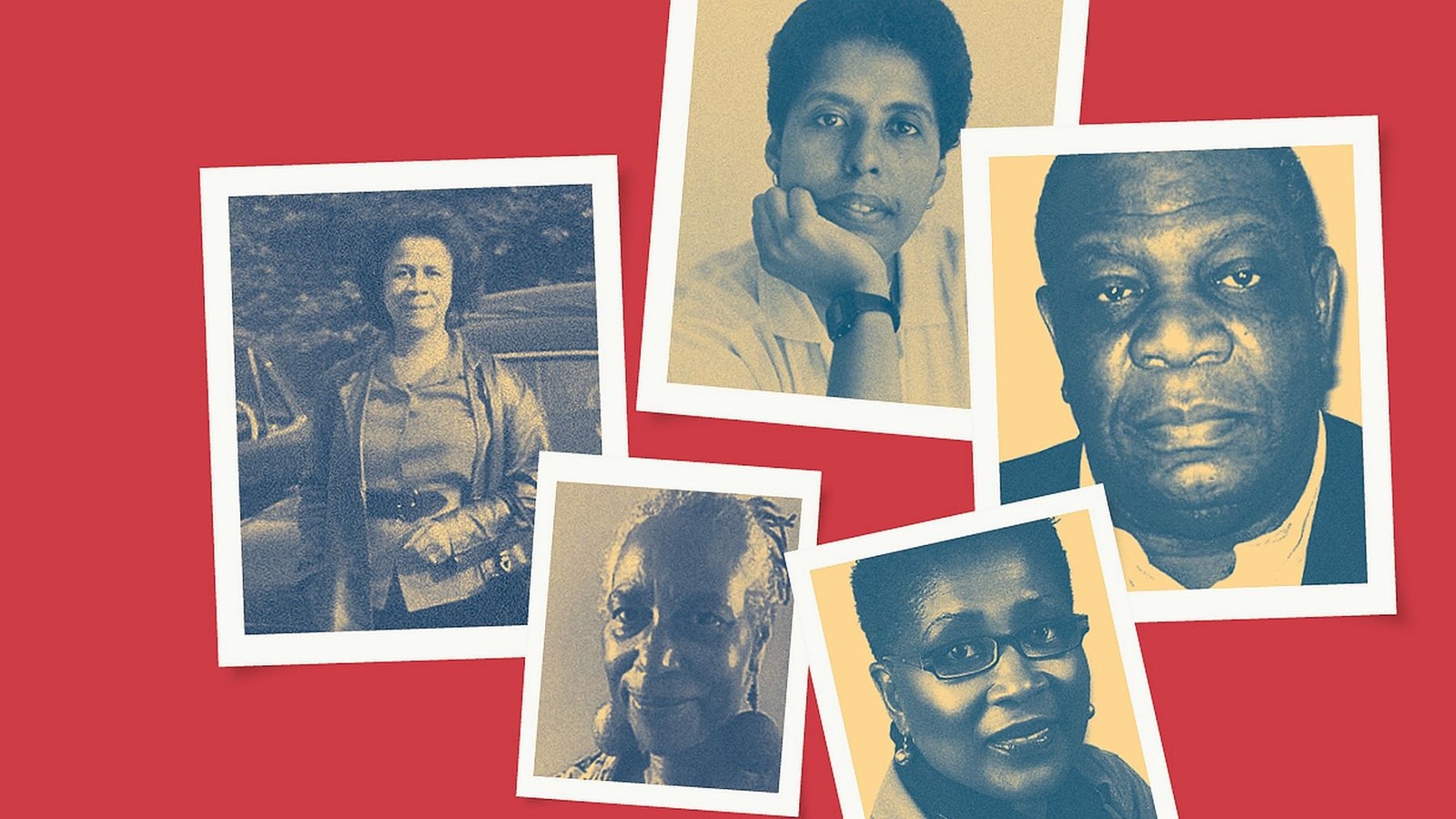It’s a constant theme whenever race, culture and counselling are discussed – why is it that white trainee counsellors are still completing their training without having adequately addressed race difference and their own unconscious bias? Why are black trainees still feeling that the curriculum and the teaching exclude and problematise them?
BACP very much wants more black people and people of colour to access the benefits of counselling; its social justice values and agenda demand this. But if white practitioners are still fearful and uncomfortable when a black client comes through the door, if the same old theories, developed in the last century by white Western men, are still being trotted out as universal truth, if we don’t make it possible for more black counsellors to train, this aspiration is unlikely to be achieved.
So argue critics of the current situation, where black trainees are still complaining of conditions and experiences that Val Watson, psychotherapist and a former director of counselling studies, found in her research back in 2004.1 It is salutary to pick just one of many comments from her 44 research participants about their experience when training: ‘I live with racism and I accept that, but it’s not until you’re kind of put in this space, call it a bubble, with a particular group of people, that you haven’t got a choice about, you have to listen to some of the things that they say in respect of “race” and culture, the lack of awareness is like hitting you in the face.’
The issues they reported included having to ‘tutor’ the class on race when the topic came up, but that it often didn’t; being expected to speak for all black people’s experience and about their own painful experiences for the illumination of their white peers; being invisible in the class – when there were discussions about difference, the class talked about gender or disability, never about race; having to ‘deny myself, how I feel and what I do and what I say’ for the duration of the course; feeling isolated and unable to be themselves in class, and having to keep their heads down and finish the course so they could get out there and do the work so urgently needed by black people, which was why they came into the profession in the first place.
And, as Watson concludes, among her many cogent observations, ‘the more serious impact of this lack of attention to issues of “race” and culture is the impact on the black client’. This concern has not changed.
Says Christa Welsh, psychotherapist and a member of the Therapy Today Editorial Advisory Board: ‘We need to stop being asked to tell our stories. There are plenty of stories out there.’ She tells her own in the 2019 edited collection Clever Girls: autoethnographies of class, gender and ethnicity,² of being shut down in a group of professional peers: ‘I call it white silence. Part of black experience is to be continually mediated and silenced by the dominant white culture.’
As with white people, many people of colour are drawn to counselling because they feel they need to work on their own ‘stuff’. For psychotherapist Billie-Claire Wright, the training and personal therapy sparked for the first time a realisation of her own internalised racism, and an accompanying sense of shame. But when she tried to talk about this in an experiential training group, she was met with a wall of silence, and a swift moving on to a ‘safer’ subject. ‘Everyone just looked at the floor, and I went home feeling worse, with even more feelings of shame and deep embarrassment,’ she says.
Critical whiteness
One of the issues Wright flags up is the way white students and tutors/trainers shy away from discussing race. The reason is often fear; sometimes ‘white ignorance’ (we choose not to know), sometimes ‘white innocence’ (the myth of the ‘good counsellor’), and the defensive reaction is often ‘white fragility’ (tears but no action), but underlying it, arguably, is the maintenance of systemic white supremacy.
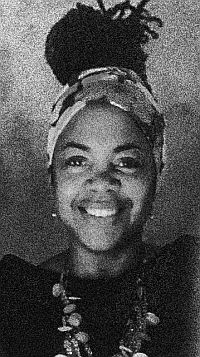
Christa Welsh
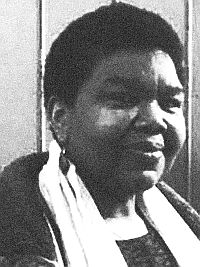
Val Watson
So argues Ruth Smith, who recently completed her doctoral research on how white counselling trainees understand race, racism and whiteness. It seemed a simple question, she says, but it unleashed some really strong reactions of anger and denial from her research participants. And while her findings are based on a very small sample (16 people), from one further education college in one geographical area, she believes they are typical of white understandings of race generally, including within counselling.
‘In my own training, we had a two-hour seminar on diversity and difference, covering all diversities. It didn’t challenge any preconceptions I held about race at the time,’ she says. ‘It wasn’t until I went on my first placement that I realised my training hadn’t prepared me for this.’ She was lucky in that her placement was with a counselling service for asylum seekers and refugees; it opened her eyes and mind.
She argues that all core counselling courses should include a separate, mandatory module on critical whiteness, and that critical whiteness should be threaded through the whole of the course. ‘Critical whiteness studies seek to make the invisibility of whiteness visible. What I noticed in my research is that whiteness permeates all the curriculum, it’s just invisible to white people. If you are a trainee of colour, the whiteness is all too visible, of course. The language is all about diversity and culture, words that are more comfortable than “race”. The theories we are taught are very Eurocentric, a very white, Westernised way of understanding health and wellbeing. It’s very depoliticised – sociopolitics is kept out. There is no requirement to look at systemic inequality, of which race is a factor. And if it is taught, it is at the discretion of the individual tutor or lecturer. It can be a tick-box exercise. Often it is taught as multicultural counselling, which is problematic of itself as it suggests that there’s counselling for white people, and multicultural counselling for the others – the majority of people, in fact.
‘I argue that, in order to make this whiteness visible, we need to bring in the theoretical, sociological understanding of whiteness, talk about the social construction of race, and combine this with counselling theory to challenge the Eurocentric way we have of working with people of colour,’ she says.
In her research, Smith found a number of barriers to having ‘the race conversation’. One was that the white counselling students ‘didn’t know anyone black’; another that they did know black people so they didn’t need to talk about it (‘some of my best friends are black’); another that to raise the issue of race was itself racist – ‘the post-racial myth’. Then there was the simple fear of ‘saying the wrong thing’. But for counsellors, perhaps the most potent is the ‘myth of the good white counsellor’, Smith says, which goes: ‘Counselling is good, I came into counselling to do good, therefore I must be good and I can’t be racist.’ That, Smith says, forms ‘a kind of double barrier’.
Training the trainers
In training, you need a facilitator who is really up on race, says Wright, otherwise it falls on the black students to take up that role. ‘You need a facilitator who is robust and who challenges, who is sensitive to the group but who can name the uncomfortable dynamics and bring them into the room.’
Watson argues that the profession needs to give much more attention to the selection, training and monitoring of trainers, to ensure they are adequately prepared and skilled to handle the complexities of leading workshops and sessions on race and culture.
Colin Lago has worked for many decades in this arena, running training courses, lecturing and publishing extensively. His most recent book, Black Identities + White Therapies, which he co-edited with Divine Charura, discusses ways forward in current training from a broad spectrum of perspectives.3
He describes massively bruising experiences when he has tackled the topic with white trainees, even in workshops where participants have voluntarily signed up to do the work. ‘When I and other close colleagues began running short courses in the 1980s and 1990s dedicated to exploring the issues of race and culture within counselling, we frequently experienced an extraordinary attitudinal/emotional change within the training group,’ he recalls. ‘In the morning we’d explore with participants the concepts of culture and cultural differences, their own origins, major influences in their lives, attitudes they’d inherited from parents, ways of being, basically sharing their own stories. In the afternoon, we’d move on to explore the consequences for black people of living within oppressive, discriminatory, racist societies. The emotional climate in the training group would shift from a fascination and sharing of lots of stories about differing cultural behaviours to the seemingly felt-sense by white participants of accusation, guilt and responsibility when looking at the multiple cumulative effects of slavery and exploitation of people of colour over 400 years or more. It was as if we were accusing them directly and personally of being racist. The response to my attempts, however tentative, to bring them with me to dare to look at the issues was defensiveness and even aggression.’
For white people, choosing to explore these issues triggers great discomfort and pain and feelings of considerable guilt, he says. ‘Of course, none of this compares at all with the gross injustices imposed on people of colour over so many centuries. But in the training context, we do have to consider carefully how best a trainer might encourage the course participants to explore these issues without closing down attitudinally and intellectually. Trainers have to be prepared,’ he warns. ‘You have to learn as much as you can about the terrain. And leaving your door open to offer follow-up support to students is really critical – you have to offer that pastoral role and make it explicit that you recognise this is challenging stuff to look at and you are there to support every student.’
He believes it’s essential to create ‘the optimum conditions for learning’ – a concept drawing on Rogers’ conditions for personal development that was coined by Brian Thorne: ‘the creation of a safe enough group atmosphere, a sense of security through beginning to know other participants seems essential in enabling participants to begin to embrace the learning, however challenging that might prove to be,’ Lago says.
Leading these sessions is an incredibly challenging task for any tutor, Neelam Zahid agrees. She teaches on the one-week Introduction to Counselling Skills course and the one-year Foundation course at the Minster Centre in north London. ‘At the Minster, we continually have these conversations about how to thread more diversity into the curriculum. It is an evolving project, there can’t be an end point, but this is where it starts, with these conversations about what works, what doesn’t and how we can do it differently and better.’
Because the context is counselling, it makes these discussions all the more highly charged, she believes. ‘In all the counselling training, we are asking the students to bring themselves into that space, and we are bringing ourselves into the space. We aren’t just presenting the materials and telling them to write an essay. Looking at race and diversity is no longer a tick-box exercise, but it also takes a lot of emotional energy and it takes a lot more out of black and Asian tutors. It will bring up different projections within students that white tutors won’t experience in the same way.’
Tutors need very good supervision to do the work, she says. ‘I have to be able to hold my stuff as well as the students’ stuff and make it a safe enough space for them.’ She gets a lot of support from the staff of colour group in the centre, where they can discuss issues that come up during teaching. There’s also a group for students of colour.
But sometimes, says Kerese Collins, lecturer in counselling and psychotherapy at Keele University and co-host of the My Wife is a Therapist podcast, even when invited, student groups can be reticent about going there, and you can’t force the issue. ‘This year I co-facilitated a session with a white colleague where we asked students to think about anything they felt personally oppressed by, or that other people are oppressed by in the world. The majority of the group were white, but there were also “global majority” students, as they preferred to be called. No one mentioned or identified race as an issue.
‘I ask myself what can I do, as a black tutor, to make it OK for students to acknowledge race in the room? Importantly, our students subsequently initiated and facilitated their own personal development group and shared feedback on the ways they felt we fell short in our awareness as a team. But our global majority students are telling us there isn’t enough about race in the curriculum and that we aren’t giving it enough time. We need to figure out how to continue to bring those conversations more freely into the room. Perhaps people who feel othered don’t feel it’s OK; perhaps they’re tired of talking about it, or fear that people won’t understand what they mean when they say they feel oppressed. For me, as a black therapist and trainer, it’s a two-part thing – I want to own if I feel oppressed and to figure out if it’s happening in me or in the environment, and whoever is responsible for this oppression needs to acknowledge it as well, even if it’s unconscious bias. Problematically, the conversation may be happening implicitly rather than explicitly. It’s a tough task for tutors to figure out the right balance between the need for global majority spaces and the need to have these conversations together.’
Use of film
So how do trainers introduce the topic and sensitively navigate students towards being able to contemplate the topic of their own racist attitudes and deeply embedded fears, shame and anger?
Billie-Claire Wright is currently experimenting with the use of film to spark off discussion in her training work. ‘Film takes the emphasis off me and you and helps us look more objectively at the dynamics and energies at play,’ she says. ‘Once you can look at it and dissect it, you can apply that to yourself without feeling so threatened. Film allows white trainees to do that more safely and it takes the emphasis off black people having to do all the work. I have used an extract from The Help, where the black maid is being denied the use of the indoor toilet and her white employers end up building a toilet outside because she is seen as unclean, and yet she is looking after their baby. I asked the white trainees to look at what was going on through the prism of Helms’ model of the stages of white racial identity development and the black participants to use Cross’s nigrescence model of black identity development.’
But her first attempt was not altogether successful, or an easy ride. ‘There was palpable discomfort from the participants, black and white – from the black trainees in particular, a sense of “Dare I say anything here? How do I feel about the whites seeing that it is happening, in a much more subtle way, to me today? Do I feel safe to say anything here?” Half an hour isn’t long enough, which is all we had. Two hours probably isn’t long enough. This needs to be threaded through the whole of the core counselling training context. There should be the same level of personal questioning around race identity as there is around personal development.’
Pam Peart, an experienced counsellor who until recently ran her own CPCAB accredited training course, says triad practice exercises in training provide an ideal and often missed opportunity to address discomfort around race and difference head-on: ‘We are not preparing people to work with real clients on the ground. Most of the training gives opportunities for peer group practice, but there’s no attempt to ensure these practice sessions include diversity as interaction with real people. And the observer of the peer practice groups should also be of a diverse culture,’ she says.
‘Books alone can’t do it – it’s only when you are sat in front of someone, hearing them, maybe dealing with their anger and with your own discomfort, that you actually become the therapist you ought to be. The BACP Ethical Framework talks about courage and wisdom – it wouldn’t say “courage” if you weren’t expected to come across situations where you have to be courageous. But for that to happen, people need to have the training.’
She argues – as does Val Watson – that, in order to qualify, all students should have to have completed a minimum percentage of placement hours working with clients from cultures and ethnicities different to their own. ‘If the college is in an area that has few ethnic minority and black communities, they should affiliate with other centres to enable them to organise diverse groups so the training can happen.’
Selection and preparation
Some argue that training institutions have an important gatekeeper role to ensure that the trainees coming onto their courses are bringing the experience, attitudes and mindsets that demonstrate they are curious and open to such concepts and challenges, as well as making sure their trainee intakes reflect the diversity of the client populations they are being trained to serve. Says Watson: ‘It takes time to train as a counsellor and it’s expensive. It is more likely to be people with money who can afford it. Currently, we are drawing from a cohort of people who are more likely to have limited exposure to diversity per se. Colleges and institutions should offer bursaries so that the training cohorts reflect the diversity of their populations.
‘The first thing I would say personally to any white person wanting to train as a counsellor is to go out there into the world and get some experience of communities and cultures that are different to your own before you train. In the US they call it a practicum – spending time working in an environment that is unfamiliar to you – as proof of your commitment, your willingness to invest.’
She would also explore in the selection interview what interest the applicants can demonstrate in learning about other cultures through the arts – films, books, plays, music and so on.
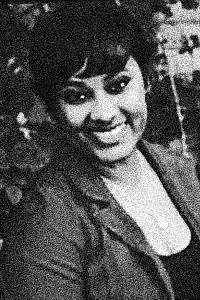
Kerese Collins

Neelam Zahid
Christa Welsh agrees there needs to be greater selectivity at the interview stage. ‘We need to go down to the source and ask applicants why they want to be a counsellor. If you come to counselling training because you want to help others, you are going to be always helping.’ Like the white Western missionaries in Africa, ‘you won’t see your client as your equal; they are always someone you are going to save,’ she says.
Val Watson commends the Black, African and Asian Therapy Network (BAATN) mentoring scheme – experienced black therapists offering their support to trainee black counsellors to help them through the training and into practice. ‘I think all students should have a mentor, not just black students,’ she says.
And if tutors are wondering how to help black and ethnic minority students feel included, just ask them, Watson advises: ‘When you offer them a place, tell them it is likely they will be the only or one of very few black students. Ask them, are there things we can do that will be helpful to you? They may not have an answer at the time but it tells them your door is open.’
Race on the curriculum
Libby Marshall, a counsellor based in Stroud, did her counselling training at Re-Vision in London and is now doing further psychotherapy training. She wants race to have a much stronger, mandatory presence in training course content and assessments. ‘Race and racism just weren’t something I thought about when I was doing my initial training,’ she admits. ‘We did have units on difference and diversity, and Re-Vision is currently developing the training on diversity, but it just didn’t land with me until the murder of George Floyd and the coverage in the media of the Black Lives Matter protests and the stories black people told about their experience.
‘I think all white trainers need to do their own work on their own internal racism too, which I know they are doing now at Re-Vision. They need to have a deep understanding of the white racial frame, how internal racism plays out in a group and somatically in their bodies. That is fundamental.’
Ultimately, what is delivered on training courses comes down to the core training curricula and course accreditation. BACP is a lead player in this as regards counselling. Many of the core courses on offer in the UK are BACP accredited, and BACP also dictates what students are taught and assessed on through the competence frameworks it publishes for generic and specialist areas of practice.
Caroline Jesper is BACP’s Head of Professional Standards and has the massive task of overseeing and reviewing how training is preparing counsellors to work in our ever-changing society and with an increasing variety of contexts and client groups. ‘We know there are great disparities in the quality of training, particularly around race; we know there’s a lot of work that needs to happen,’ she says.
Work is already under way, with the setting up of an Equality, Diversity and Inclusion (EDI) Task and Finish Group, whose remit is to help BACP develop an EDI strategy. ‘It will focus on every aspect of equality and diversity,’ Jesper says. ‘We want EDI to be a core part of training programmes and to be embedded throughout all aspects of the training – from student recruitment and how students experience the course, right through to how students develop their competence in this area and the competence of the trainers as well. When we are hearing from trainers about their own lack of confidence and fear of getting it wrong, we have to ask how that cascades down to students who aren’t being enabled to have a curious mind and the confidence to ask if their understanding or awareness is wanting in some way. We can’t expect students to do it if the trainers can’t do it themselves.’
BACP is part of a wider Diversity and Inclusion Coalition, made up of 11 professional bodies and associations.* The coalition has commissioned a toolkit to help training institutions, course leaders and trainers develop the skills and knowledge for working within diversity across all aspects of the training programme. The initial focus will be on race, ethnicity and anti-oppressive practice, and there are plans to include other areas of diversity shortly. ‘It will be a free resource for all which we hope will be available by 2022,’ Jesper says.
BACP is also currently exploring the possibility of funding bursaries for people from under-represented groups to undertake counselling training, and setting up a mentoring scheme to support marginalised trainees through their training programme. Says Jesper, ‘We are going to be consulting with courses and students. Everybody has to have a voice. It’s a long game and we want to get it right, not rush through a knee-jerk response and get it wrong.’
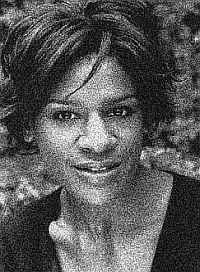
Billie-Claire Wright
* The D&I Coalition is chaired by Place2Be and includes: Association of Christian Counsellors, Association of Child Psychotherapists, Anna Freud Centre, British Association of Art Therapists, British Association for Counselling and Psychotherapy, Counselling and Psychotherapy Central Awarding Body, Muslim Counsellor and Psychotherapist Network, National Counselling Society, Psychotherapists and Counsellors for Social Responsibility, Place2Be and UK Council for Psychotherapists.
Next in this issue
References
1. Watson V. The training experiences of black counsellors. PhD thesis. Nottingham: University of Nottingham; 2004.
2. Goode J (ed). Clever Girls: Autoethnographies of class, gender and ethnicity. London: Palgrave Macmillan; 2019.
3. Charura D, Lago C. Black Identities + White Therapies. Monmouth: PCCS Books; 2021.
4. Yancy G. Dear White America. New York Times. 24 December 2015. www.opinionator.blogs.nytimes.com/2015/12/24/
5. Smith L, Proctor G, Akondo D. Confronting racism in counselling and therapy training – three experiences of a seminar on racism and whiteness. Psychotherapy & Politics International 2021; 9(2): e1579.
